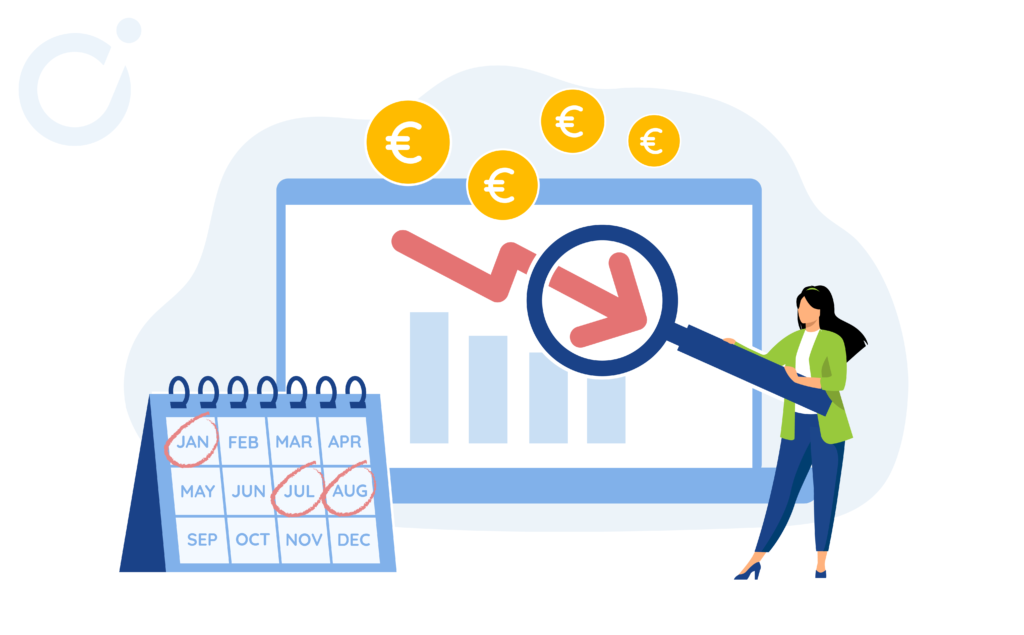Summer is here, the most frightening period for publishers, just like January. The reason? A drop in eCPMs and poor overall advertising performance. This yearly phenomenon is common to all publishers. There are several reasons why… Find out in this article and learn how to overcome them by implementing some good practices.
Why do we see a drop in advertising performance at certain times?
Every year, the same thing happens. The advertising statistics for January, July and August raise hackles. Here are the main explanations:
- Fewer purchase intentions and advertising campaigns at the beginning of the year.
After the fourth quarter, users’ purchase intentions decrease and e-commerce sites record less visits.
Due to this drop in traffic, most advertisers are significantly reducing their participation in auctions. Indeed, they tend to moderate their spending and be more cautious with their advertising budget at the beginning of the year, which results in lower eCPMs.
- Summer break.
In July and August, users slow down their web browsing to take full advantage of their summer holiday. Another reason for the drop in summer revenue is that budgets are sometimes reviewed at the beginning of the semester. July corresponds to the start of the 2ᵉ semester when advertisers budget is more spread out over the last quarter.
Other, more specific, reasons for a drop in audience and revenue may include:
- Inflation.
- The geopolitical context (The war between Russia and Ukraine since February 2022).
- An increase in negative consents in 2022 vs. 2021 with the implementation of the new CMP format (“reject all” or “continue without accepting” options on the first screen of the CMP). However, comparisons between these two years should be made with caution. Q2 2021 was an exceptional period of post-lockdown recovery.
How to minimize this drop?
To compensate for this decline, there are several techniques you can use:
- Adopt the right floor price strategy.
Since advertiser demand is stronger in the fourth quarter, we recommend increasing floor prices for this period. On the other hand, it is better to reduce them in January.
Rather than doing this manually, we recommend implementing an automatic strategy. Our dynamic floor price optimization technology adjusts floor prices based on seasonality and a wide range of criteria calculated with AI. This strategy allows maintaining a good level of revenue for publishers and offers transparency to SSPs since the floor price is communicated to all marketplaces before the auction.
To go further: discover Opti Yield, a solution that dynamically optimizes your ad yield.
- Optimize your advertising inventories.
You can, for example, offer formats with high eCPMs such as sticky bottom or sticky top formats and interstitials.
We also recommend that you choose an automatic advertising insertion feature on your pages that host long content so that you don’t forget to monetize certain inventories.
- Improve your SEO and viewability rate.
Optimize your site so that it loads quickly and is well indexed in the SERPs in order to gain traffic and therefore, additional income. We also advise you to improve the viewability of the ads thanks to lazy loading for example, in order to increase the loading speed of your site and obtain a better fill rate. Indeed, advertisers prefer to invest in an inventory with a high viewability rate, above 70%.
- Take advantage of the best performing months
June, October, November and December are the months when advertisers concentrate their ad expenses (increased traffic before the summer vacations, Black Friday, Thanksgiving in the United States and Christmas). This is why ad revenue is usually higher in the 2ᵉ and 4ᵉ quarters as traffic and user engagement increases. Maximizing your revenue in these months can help compensate for lower revenue in January, July and August.
At Opti Digital, we constantly follow up with the advertising performance of our publishers via our dashboard, and we systematically check that our setup remains optimal. Our dynamic price floor optimization, automatic content insertion and intelligent ad refresh technologies are able to compensate for seasonal revenue drops.
If you have any questions about our products and support, contact us 😊

